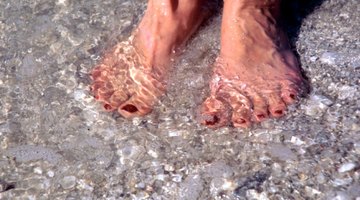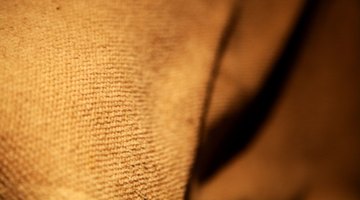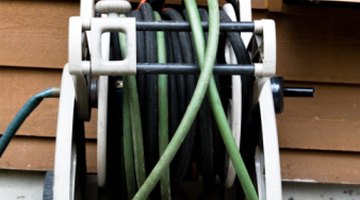My Yew Bushes Are Turning Yellow
Yews are an evergreen susceptible to a range of environmental factors that can cause yellow needles. Usually, yellowing of all or part of a yew can be attributed to an issue with moisture. Yews, like all evergreen do not like to be constantly saturated.

Planting yews in a well-drained, sunny location is the best measure to prevent yellow needles.
Wet Soil

When soil is oversaturated and doesn't drain well, oxygen levels are drastically reduced. The roots of yews are not able to properly respire in a wet environment. Symptoms of oversaturation do not always evince themselves until it is too late. To avoid the likelihood of too much moisture, do not plant yews in heavy clay soils, or in areas that receive heavy amounts of underground drainage. Compaction of soils near yews should be avoided as well.
WInter Injury

Yews can develop yellow needles as a result of various winter injury. Yews that are exposed to wind can be subject to dessication. Dry winds remove moisture from the needles and, due to the frozen nature of the soil, the roots are unable to replace it. This type of damage occurs usually on the west side, or the side most exposed to prevailing winds. Prevention of winter damage can be obtained by constructing a wind barrier or by spraying an antidesiccant.
Salt Damage

Another potential cause of yellowing in yews is exposure to ice-melting salt. This type of damage is limited to yews that are bordering sidewalks, driveways and roads that receive heavy amounts of salt in the winter time. Damage is usually not evident until spring and it is often irreversible. Irrigating the area to leach out excess salts can sometimes reduce the amount of salt damage that can be caused by snow and ice control.
Herbicides and Pollution

Exposure of yews to various pollutants and chemical compounds can often present as yellowing of all or a portion of the needles. Often the newest growth is effected and it can produce deformed as well as yellow needles. Damage can sometimes take years to become evident after the initial cause may no longer be present. Accidental exposure to herbicides may be controlled by heavily irrigating the exposed areas to varying degrees of success, especially if applied immediately.
The Drip Cap
- Yews are an evergreen susceptible to a range of environmental factors that can cause yellow needles.
- Yews, like all evergreen do not like to be constantly saturated.
- Planting yews in a well-drained, sunny location is the best measure to prevent yellow needles.
- Yews can develop yellow needles as a result of various winter injury.
- Exposure of yews to various pollutants and chemical compounds can often present as yellowing of all or a portion of the needles.
References
- Iowa State University Extension; Common Problems on Yews; Christine Engelbrecht; May 2006
- Ohio State University Extension Fact Sheet; Disorders of Yew (Taxus) in Ohio; Taylor, et al.; 1996
- Ohio State University Extension Fact Sheet; Yellowing, Dieback and Death of Narrow-Leafed Evergreens; Stephen Nameth, et al,; 1996
Writer Bio
Chris Bond has been writing about gardening, sustainable agriculture and local history since 2005. He has been published in "The Plain Dealer," "The Repository" and online. Bond holds an A.A.S. from the State University of New York at the Finger Lakes campus in Canandaigua, N.Y.
Photo Credits
- Dynamic Graphics Group/Dynamic Graphics Group/Getty Images
- Dynamic Graphics Group/Dynamic Graphics Group/Getty Images
- Jupiterimages/Photos.com/Getty Images
- Jupiterimages/Photos.com/Getty Images
- Thinkstock Images/Comstock/Getty Images
- Jupiterimages/Photos.com/Getty Images
More Articles



